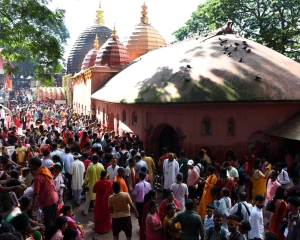E-rickshaws are the latest to be blamed for the state capital’s traffic mess. But this isn’t new. The city has long held the poor responsible for its chaos — and in doing so, quietly swept democracy to the kerbside.
First, it was tongas. Later, it was the cyclists, the noisy Bhatsuar tempos, and ageing minibuses. Every time Bhopal’s streets choked, the finger pointed downward — at those with the fewest choices, the lowest incomes, and the least power to defend themselves.
Earlier this month, the administration banned these battery-operated vehicles from major roads. They must now operate in colonies and lanes, far from where commuters actually are. The reasoning? To decongest city traffic.
But in truth, this isn’t about vehicular congestion — it’s about visibility and control. It’s easier to blame the slow-moving three-wheeler than confront the private SUV parked on the footpath, the errant shopkeepers at Karond who rent out public space to hawkers, or the civic officials who prefer to look the other way.
On paper, e-rickshaws were a solution. Introduced in 2019 with subsidies and fanfare, they were meant to plug the city’s last-mile gap. And they did. Working-class drivers adapted quickly, offering affordable rides where neither buses nor autos reached.
But with no formal training or traffic integration, they became easy to pick on. Every time there was a jam, someone pointed to an e-rickshaw — not to the shrinking sidewalks, unchecked parking, or poor signal coordination.
Bhopal’s real problem isn’t these vehicles. It’s the sheer growth in numbers. The city now has over 1.5 million registered vehicles — including nearly 3 lakh private cars — for a population of just over 2 million. The roads haven’t grown, but the fleet has.
Ride-hailing apps added more. Car-centric planning made it worse. Yet no sweeping policies regulate private ownership or reclaim public space from encroachers, vendors, and derelict vehicles.
Earlier this week, an ambulance was stuck near Chetak Bridge for 25 minutes, its siren blaring uselessly. Every inch of road was taken. And still, the blame fell not on the city’s planning or enforcement — but on those who make a living transporting others.
In the decades after independence, Bhopal’s roads were egalitarian spaces. Bicycles were prized possessions. Tongas, tempos, autos — all shared the lane.
Over time, that idea faded. Roads became contested. Occupied. Hierarchised. Today, space is power — and some are definitely more equal than others.
This is where democracy was meant to bloom — not in speeches or ballot boxes, but in the everyday act of moving through the city.
When a battery-rickshaw is pushed aside for a luxury car. When a cycle is seen as a nuisance and a sedan as normal. When the poor are made to disappear for the comfort of the middle class — that is when this idea of democracy begins to fade. Until we stop blaming those at the bottom and start asking why the top escapes scrutiny, traffic solutions will remain hollow. Until we see roads as shared, not seized, the chaos will persist. The promise of a democratic city lies not in who gets to drive fastest — but in all of us moving through the city together, and with equity.

























